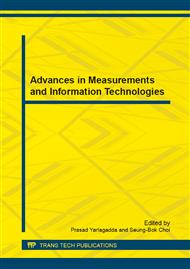p.357
p.363
p.367
p.372
p.377
p.382
p.386
p.390
p.394
A Specular Shape-from-Shading Method with Constrained Inpaiting
Abstract:
The existence of specular highlights is a great obstacle of shape-from-Shading. For a single gray-scale image with only intensity information, the existed highlights detection methods based on chroma or polarization analysis cannot directly be applied on it. So, a method using surface shape is provided, it makes full use of the imaging process. Through the surface normal estimation, compute the maximum a posteriori probability of each reflection composition under simulated annealing and detect the highlights areas. Finally, remove the highlights based on the assumption of curvature continuity. Experiments reveal that this method is effective on synthetic and real-world images, improves the accuracy of surface recovery for image combined specular highlights.
Info:
Periodical:
Pages:
377-381
Citation:
Online since:
February 2014
Authors:
Price:
Сopyright:
© 2014 Trans Tech Publications Ltd. All Rights Reserved
Share:
Citation:


